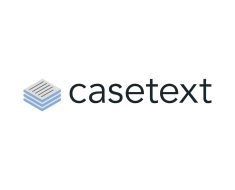
By Brad Gyger
While the technology required to leverage generative artificial intelligence (AI) may seem daunting to many business leaders, it will surprise them to know that every organization already has most of the critical ingredients for generative AI use cases – it is just a matter of putting everything together.
After seeing how generative AI is already transforming content creation, businesses are scrambling to integrate it into other aspects of business operations such as customer service, market intelligence, employee training, and even developing software solutions.
IDC found that 43 percent of organizations in the Asia Pacific region are currently exploring potential use cases for generative AI, while Gartner predicts that over 80% of companies will have adopted generative AI application programming interfaces (APIs) and models or implemented operational settings powered by generative AI by 2026.
A future where every team and individual within an organization, as well as their customers, will have to extensively engage with autonomous AI agents to increase productivity, meet objectives, and fulfill their needs is now just a matter of time.
But to get to that future, businesses have to ensure that the infrastructure is in place to meet the demands of generative AI.
The key role of vectors in generative AI
If generative AI is the car that brings businesses to the future, large language models (LLMs) comprise the figurative engine. A common misconception about the driving force behind generative AI is to think of it as similar to a human brain in all aspects.
One significant difference is that LLMs cannot “remember” in the same way humans do. This means that they cannot retain information from previous interactions.
Nevertheless, by leveraging large amounts of relevant data, applications built on LLMs can give the perception of “remembering” past interactions because it has already been exposed to the questions they are being asked and the answers to them.
These interactions provide expertly curated information that is more valuable, specific, comprehensive, and sometimes uncannily accurate, allowing apps to have highly advanced and conversational ways of interacting with users.
Continuing the metaphor of generative AI, LLMs, and motor vehicles, data is the fuel that keeps the engine running. For LLMs to comprehend words, they must be stored as numerical data sets called vectors.
These vectors capture the meanings and patterns of word usage, making them the common language of AI.
Vector search versus keyword-based search
Vectors are considered a crucial element for developing vital business applications and services on top of LLMs because they enable more efficient searches through extensive datasets containing multiple data formats.
This approach, known as “vector similarity search” or “nearest neighbor search,” allows for a quick examination of millions of customer profiles, images, or articles, to name a few examples, all represented as vectors.
Unlike traditional keyword-based search methods which rely on specific terms to match documents, vector search is centered around the similarity of queries, such as their semantic meanings.
For instance, words like “happy,” “cheerful,” and “joyful” share similar meanings, but a traditional keyword-based search would not return documents matching “cheerful” and “joyful” in response to a query for “happy.”
Vector search comprehends meaning and allows users to describe their search criteria without requiring exactness. This capability enables the identification of similar items based on their vector representations.
By utilizing similarity search algorithms, vectors can be measured for their “distance” or similarity, serving as a metric to determine their level of relatedness.
Enabling vector search through powerful data stores
To meet the demands of AI applications, it is necessary to store and retrieve vectors in fast and scalable databases. Speed is a critical requirement for databases that support vector search.
Unlike traditional databases that need to compare a query with every item in the database, integrated vector search utilizes indexing and search algorithms to significantly accelerate the process.
This enables the search of massive amounts of data in a fraction of the time it would take for a standard database.
There are a limited number of databases available today that offer vector search as a feature, and fewer still that provide the scalability and speed required for handling the demanding requirements of generative AI.
By incorporating vector search capability on a highly scalable and high-throughput open-source data store, calculations and ranking can be executed directly within the database, eliminating the need to transfer large amounts of data to external systems, reducing latency, and improving overall query performance.
The article is written DataStax chief revenue officer Brad Gyger




